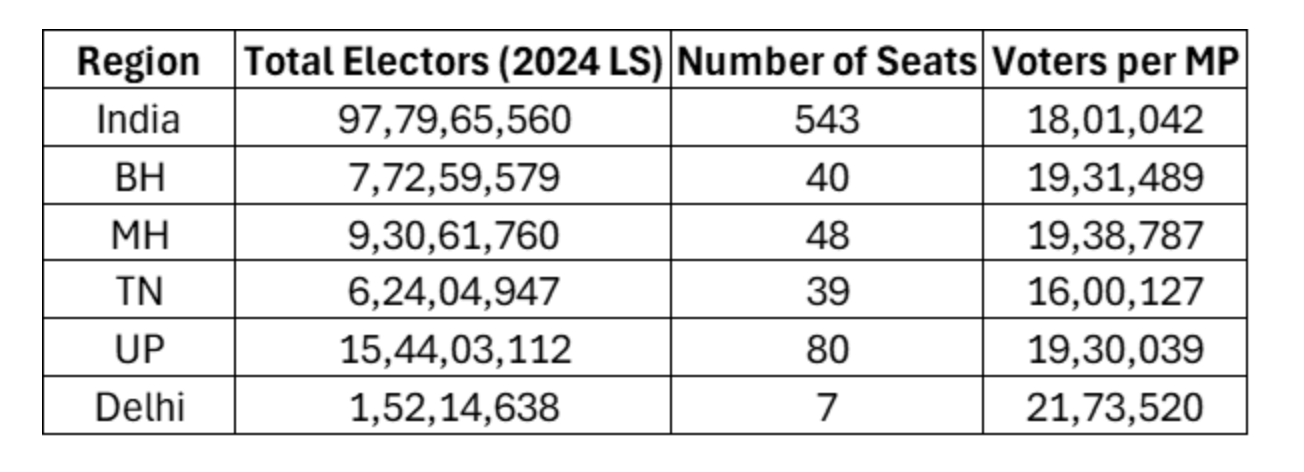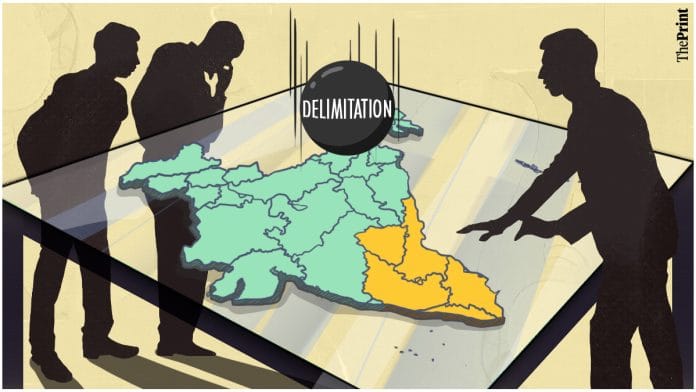Thank you dear subscribers, we are overwhelmed with your response.
Your Turn is a unique section from ThePrint featuring points of view from its subscribers. If you are a subscriber, have a point of view, please send it to us. If not, do subscribe here: https://theprint.in/subscribe/
The last week brought about a politically-charged topic in the limelight in India – “Delimitation”. Constitutionally, India is supposed to have a census by 2026, and based on that – would have to reallocate Lok Sabha seats.
The last time this was done was in 1976, basis the 1971 census. Since then, the population of India has grown 2.7X . The concern here, however, is the disparity in the population growth in India state-wise. Source

So what are the challenges?
Over the last 50 years, the states south of the Tropic of Cancer have performed significantly better than those compared to their northern peers on Human Development parameters. Across indices – education, infant mortality, GSDP/capita, industrialisation – the southern states have done far better. As an outcome of improved parameters, their share of population has dropped. So, if the Lok Sabha seats are allocated on the basis of the 2025 population count, the southern states will have a lower % seat share in the new Lok Sabha as well as fewer % of MLAs. This (creates an incentive for) for the state leadership to not push for population control and related developmental benefits, since it results in the loss of political capital for them.
An alternative way is to keep the percentage representation of the state same, despite the changes in population. The primary concern with this solution is that the number of electors per MP gets skewed. This implies that a vote from Tamil Nadu gets more importance than a vote from UP since the MPs from Tamil Nadu need fewer votes to win the seat. This is fundamentally against democratic principle of equality. Since there hasn’t been a change in the Lok Sabha seats since 1976, the voter count per MP has already become skewed.

The solutions to solve for this are not difficult to conceive, but are incredibly difficult to implement politically.
A straightforward solution is to allocate Lok Sabha seats basis the 2025 census, but also while carving separate parts of states with a significantly high population. One, this would ensure that a single state doesn’t take up a very high share of the Lok Sabha seats. To give context, the population of Uttar Pradesh (80 Lok Sabha Seats) equates to a 5th most populus country in the world. Two, there are clear administrative benefits of having a manageable population. Three, administrative division of states would also not disincentivize otherwise developing states from developing on human development parameters.
Additionally, a law mandating the bifurcation of states once their population exceeds 8-9 crores would incentivize state leadership to prioritize population control and associated human development indicators to retain their political influence. This would ensure alignment of political motivations and socio-economic growth.
Politically, for any party looking to win majority in such states, this is a tricky situation. On one hand, there are clear benefits to administratively dividing a state. On the other, loss of support from core voters puts their leadership opportunities at risk. Historically, bifurcating states has not turned out well for parties holding power at the centre.
This is what makes the obvious decisions difficult to implement. While creation of new states presents Gerrymandering opportunities to political parties, the risk of voter dissonance is far higher.
The next 2 years in Indian politics, are going to be very interesting. It would very well decide the course of the 2029 Lok Sabha elections.
These pieces are being published as they have been received – they have not been edited/fact-checked by ThePrint.


